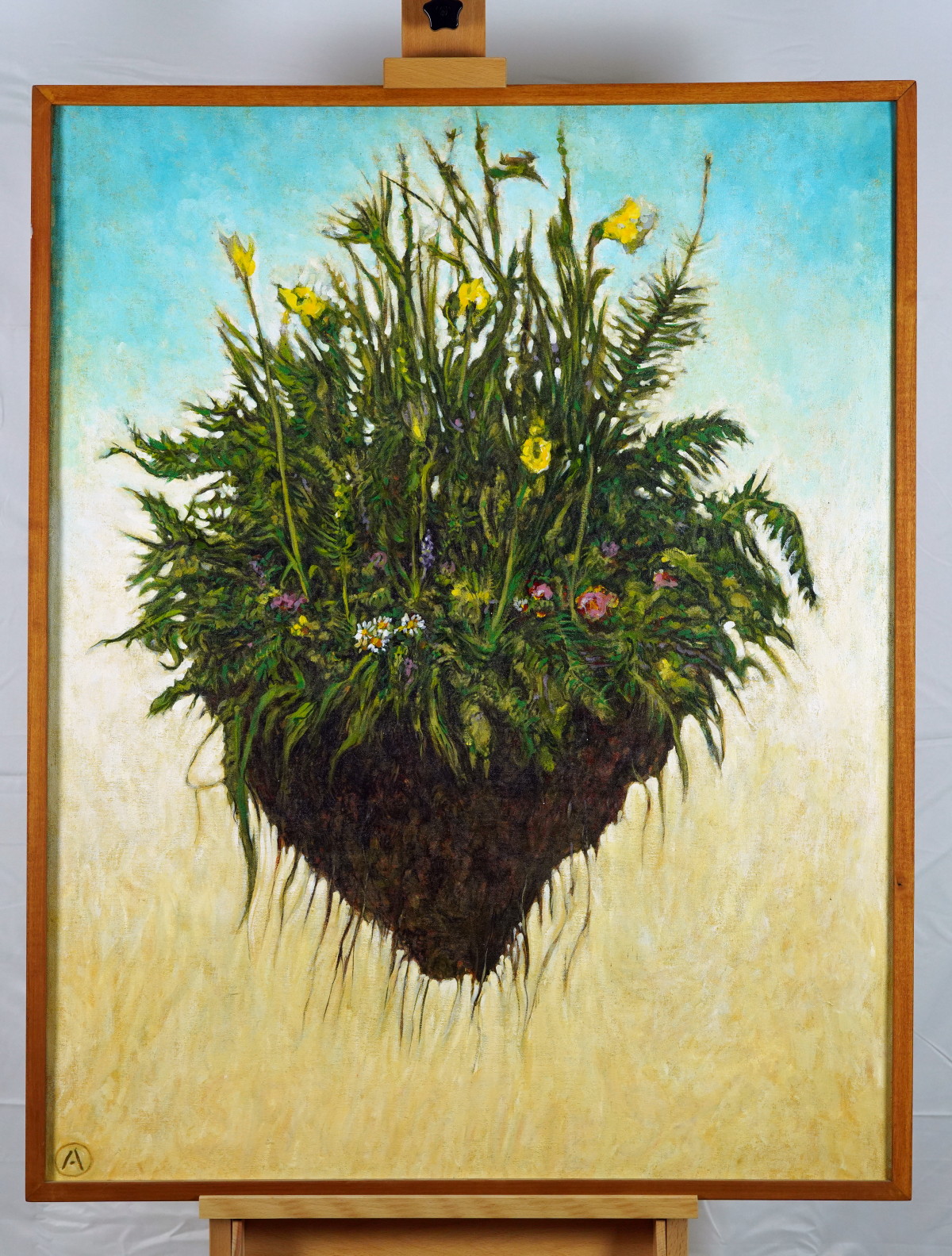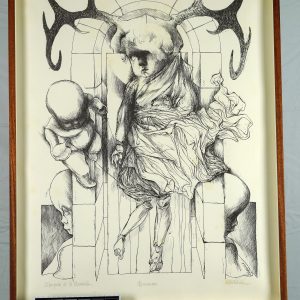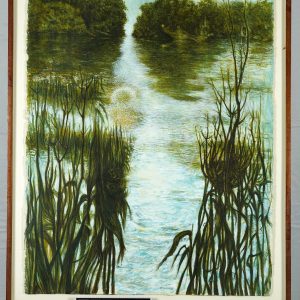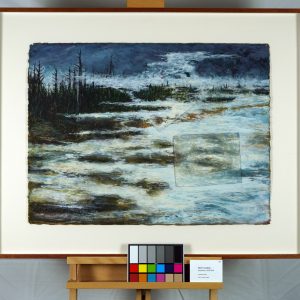Description
anonymous flowers, no date
Acrylic on canvas
Signed A (what is the reason for this?)
41.5 x 32.5 in. (frame)
original, includes certificate of authenticity from ArtTrust
This painting “Anonymous Flowers” presents an intriguing amalgamation of lush greenery suspended in mid-air, seemingly defying gravity. The central cluster of foliage consists of various plants, flowers, and ferns, all of which appear to grow organically from a floating mass of soil. The vivid green hues contrast with the pale, ethereal background, lending a sense of surrealism to the scene.
In Zen Buddhism, nature often symbolizes the impermanent and ever-changing nature of reality. The floating greenery here could be seen as a representation of detachment from worldly concerns—hovering freely, unbound by the earthly ground. This imagery suggests a transcending of the mundane, where life continues to grow and flourish even when the usual support systems are absent. It resonates with the Zen concept of mu, or emptiness, which is not an absence but a fertile space where life emerges spontaneously.
The I Ching’s hexagrams can offer insights into this composition. The painting might correspond to Hexagram 11 (Tai or “Peace”), symbolizing harmony between heaven and earth. In the context of this painting, it reflects an ideal state of balance where the natural world achieves a perfect equilibrium—suspended between the sky and the earth. This position suggests a state of fluidity, where growth occurs unimpeded by rigid structures, in line with the I Ching’s teaching of embracing change and transformation.
The artwork unifies elements of Zen and I Ching principles by portraying an image where life exists in a liminal space—between earth and sky. The floating island of greenery could symbolize a sanctuary, an oasis of peace that invites the viewer to contemplate life’s cycles. It serves as a reminder of the vitality that can be found when one lets go of the ground beneath their feet, embracing uncertainty as a natural state of being.
The painting draws on traditions of Surrealism, where familiar elements are placed in unusual contexts to provoke a sense of mystery. Artists such as René Magritte and Salvador Dalí often utilized floating objects to disrupt the viewer’s perception of reality, and this piece follows a similar path. Additionally, the technique used to depict the foliage recalls the lush brushstrokes of the Romantic period, while the background’s ethereal quality suggests an Impressionistic approach to color and light. The painting thus becomes a bridge between different art movements, inviting the viewer to explore a space that is both rooted in history and open to interpretation.
*Shipping cost will vary, please inquire at sales@camblingallery.com before purchasing.
Currently ships from Oregon, USA
Member of artnet? Apply for a discount! Inquire about intergallery and permanent loans for museums.
Reproductions of this drawing are available in multiple sizes!
Click here to use our high-resolution viewer!
This artwork is available with a non-fungible token to ensure traceability and transparency of provenance.
The royalty factor – Unlike traditional artworks, such as paintings, mosaics, statues, and the like, NFTs can be programmed to provide royalties to you every time the painting (and token) is sold and resold – for eternity. That mind-bending Camblin you sold could be worth millions one day and provide income for your great-great-great grandkids!
Anti-forgery – The central idea underpinning NFTs is that they are built on the blockchain, which is meant to offer advanced security. Think of it like an un-erasable and un-avoidable copyright.
Easy authentication – Another compelling aspect of NFT art and NFTs in general is the ability to quickly and easily authenticate items, as the record of ownership is scrupulously kept on the blockchain.




